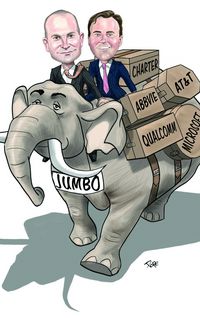Watershed moment
UBS has fought hard to make its FIG franchise one of the best in the business. For its market leadership in a year shaped by volatility and regulatory evolution, UBS is IFR’s Europe Financial Bond House of the Year.
UBS’s rise through the ranks over 2015 has been truly meteoric. Having languished in 14th place for all euro-denominated financials business at the end of 2014, by the end of November it had risen to third, taking a 6.4% market share – up from 2.7% – according to Thomson Reuters data.
Indeed, 2015 proved a watershed for the Swiss bank. After enduring numerous organisational restructurings and team departures in recent years, this was the year that UBS cemented its position as a major player in the financials space.
Its apotheosis came despite a turbulent market backdrop that repeatedly shut issuance windows and a fast-changing regulatory environment both for banks and insurers.
But UBS’s ability to bring trades even during the most volatile periods, paired with its best-in-class advisory business, saw it mandated time and again in both the capital and funding markets.
Preparing for new resolution rules was a key theme for banks throughout the year, as the worlds of capital and senior collided and different jurisdictions tussled with different solutions.
“The funding business has moved to an advisory business,” said James Marriott, head of EMEA financial institutions DCM at the bank. “We now have the capital advisory guys in the room for the first time.”
Leading by example, UBS made a strong start on shifting its issuance to the holding company to comply with Swiss regulation, issuing senior bonds in three currencies and a three-part multi-currency inaugural Additional Tier 1 trade.
UBS further proved its worth by executing some of the year’s more complex AT1 deals, including inaugural trades for comeback kids Bank of Ireland and ABN AMRO. It also structured and executed an inaugural sterling AT1 for Santander UK, spotting a window in June despite ongoing Greek turmoil.
In Tier 2, it helped Banque Federative du Credit Mutuel reopen the market in September, the first trade in the format since July, and landed a deal for Ibercaja, Spain’s eighth-largest bank, after a torrid period that saw others’ mandates fall by the wayside.
Tier 2 deals for the Co-operative Bank and SNS Bank, in sterling and euros respectively, underlined its ability to sell more challenging stories to the market.
UBS ramped up its market share in the insurance sector, managing to do so without relying on business from franchise loans, and at a time when issuers and investors alike were grappling with the implications of Solvency II regulation.
In December 2014, it led a €500m Tier 2 deal for Intesa Sanpaolo Vita before the grandfathering window allowing for that to count as Tier 1 capital slammed shut, despite competing issuance and a volatile backdrop.
It helped KLP and Danica access the market after lengthy absences and was involved with a tender and reoffer of subordinated notes for Swiss Re. It also led a perpetual sub for Helvetia, the year’s first Swiss franc hybrid.
But it was not in the capital market alone that UBS shone. The bank’s resolve to grow its funding flow business bore fruit, snagging mandates both for covered and senior trades from more than 50 issuers across core and non-core currencies.
Its strength in the UK and Irish market saw it pulled into a covered bond issue for Allied Irish Banks after the mandated deal failed to materialise in 2014. It also executed trades for the trickier peripheral names as well as core issuers.
UBS’s dialogue with investors was crucial to its success. It arranged more than 600 one-on-one investor meetings for EMEA issuers in the IFR awards period and its global reach enabled it to guide clients beyond Europe’s borders to the most suitable market, whether the Yankee market for Nationwide or Australian dollars for Rabobank.
“We offer a very broad reach in terms of which markets we can bring issuers to,” said Barry Donlon, global head of capital solutions and liquidity. “We don’t talk to them about a bond, but a capital structure.”
UBS rounded off IFR’s awards period with one of its trickiest trades of all: a life-or-death liability management exercise for Piraeus Bank, which had the largest capital shortfall of all the Greek banks. UBS was a structuring bank and dealer-manager.
To see the digital version of the IFR Review of the Year, please click here .
To purchase printed copies or a PDF of this report, please email gloria.balbastro@tr.com .
<object id="__symantecPKIClientMessenger" style="display: none;" data-install-updates-user-configuration="true" data-extension-version="0.4.0.129"></object>




